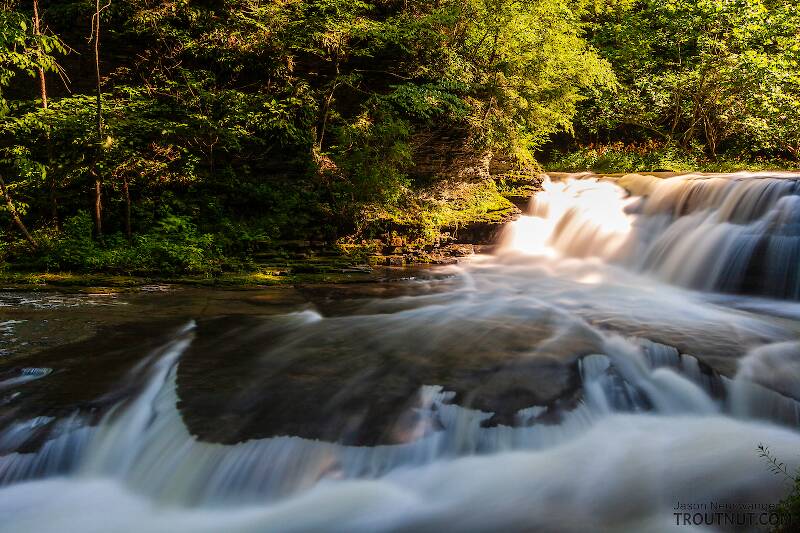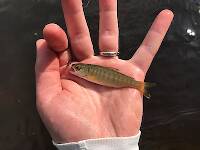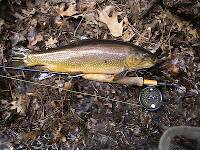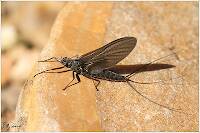
Blue-winged Olives
Baetis
Tiny Baetis mayflies are perhaps the most commonly encountered and imitated by anglers on all American trout streams due to their great abundance, widespread distribution, and trout-friendly emergence habits.
Featured on the forum

This dun emerged from a mature nymph on my desk. Unfortunately its wings didn't perfectly dry out.

Troutnut is a project started in 2003 by salmonid ecologist Jason "Troutnut" Neuswanger to help anglers and
fly tyers unabashedly embrace the entomological side of the sport. Learn more about Troutnut or
support the project for an enhanced experience here.
Boulder-hopping on the Middle Fork of the Snoqualmie
Boulder-hopping on the Middle Fork of the Snoqualmie
By Troutnut on September 21st, 2020
I wanted to get out one fishing and hone my fledgling Euro nymphing skills one more time before today's major beginning to the fall rainy season, so last night I drove way up the Middle Fork of the Snoqualmie to fish a section of fast pocket water for a couple hours.
Working my way up the line of slippery car-sized boulders and fallen trees that comprise the river bank, sandwiched between the roaring whitewater and impenetrable vegetation, was as much an exercise in gymnastics as in fishing. However, I found plenty of what I came for: interesting nymphing water and very pretty, very small coastal cutthroat and rainbow trout. The largest of the couple dozen fish landed were a pair of 9-inch cutthroat. I could have found slightly bigger fish downstream closer to town, but the seclusion of the headwaters was worth the extra drive.
Working my way up the line of slippery car-sized boulders and fallen trees that comprise the river bank, sandwiched between the roaring whitewater and impenetrable vegetation, was as much an exercise in gymnastics as in fishing. However, I found plenty of what I came for: interesting nymphing water and very pretty, very small coastal cutthroat and rainbow trout. The largest of the couple dozen fish landed were a pair of 9-inch cutthroat. I could have found slightly bigger fish downstream closer to town, but the seclusion of the headwaters was worth the extra drive.
Photos by Troutnut from the Middle Fork Snoqualmie River in Washington
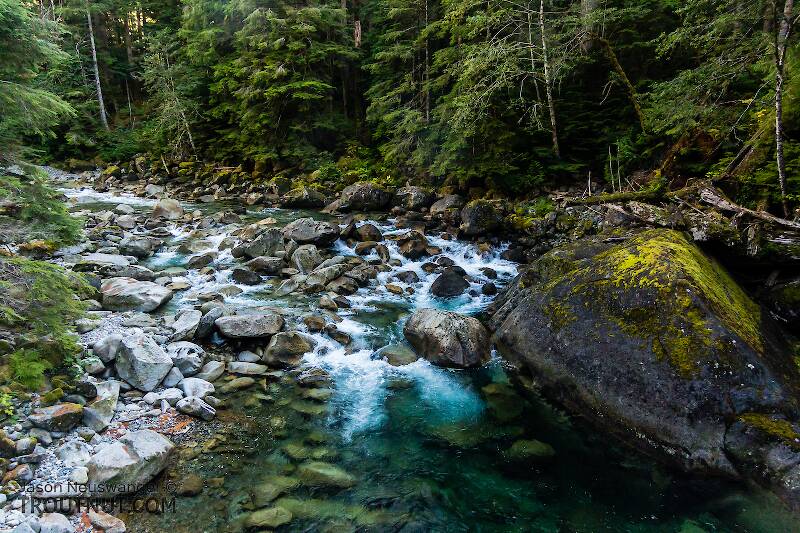
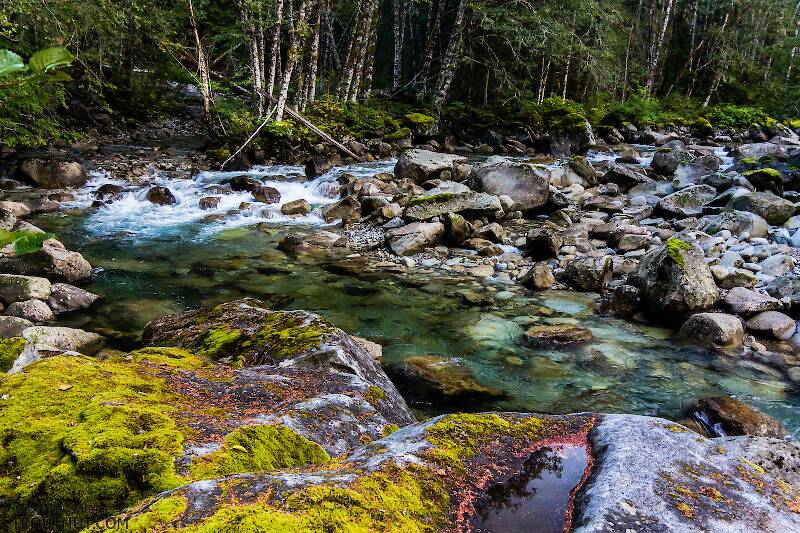
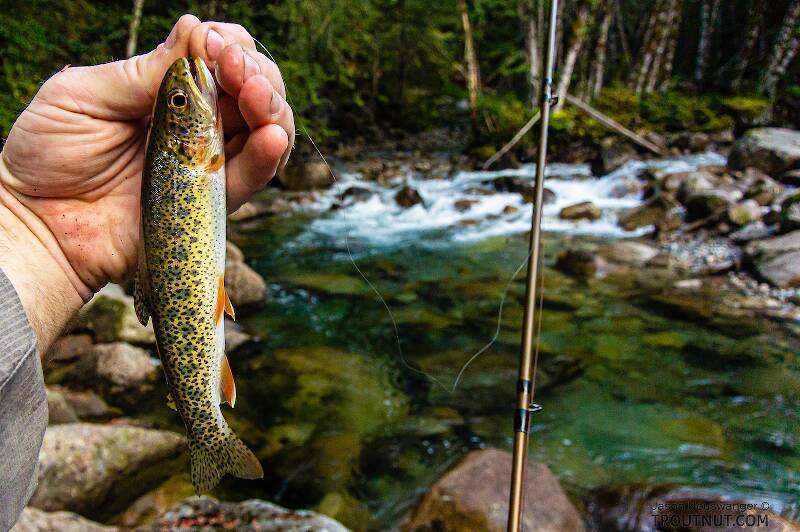
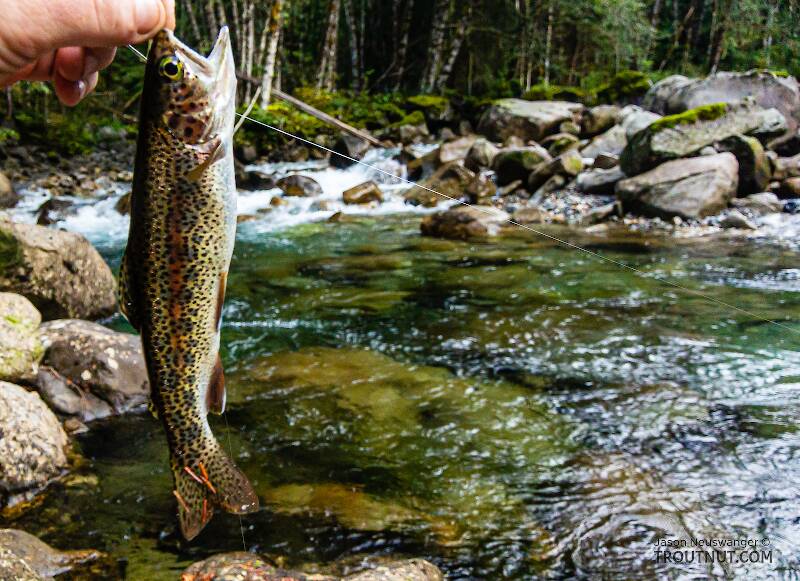
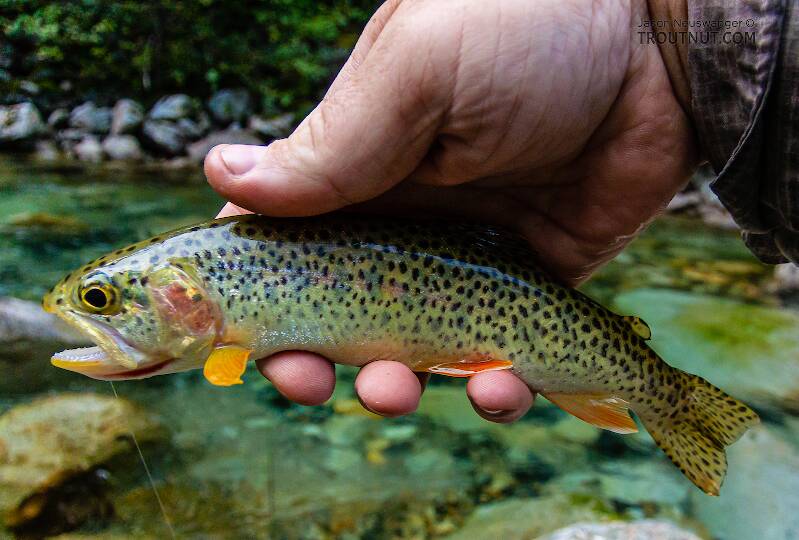
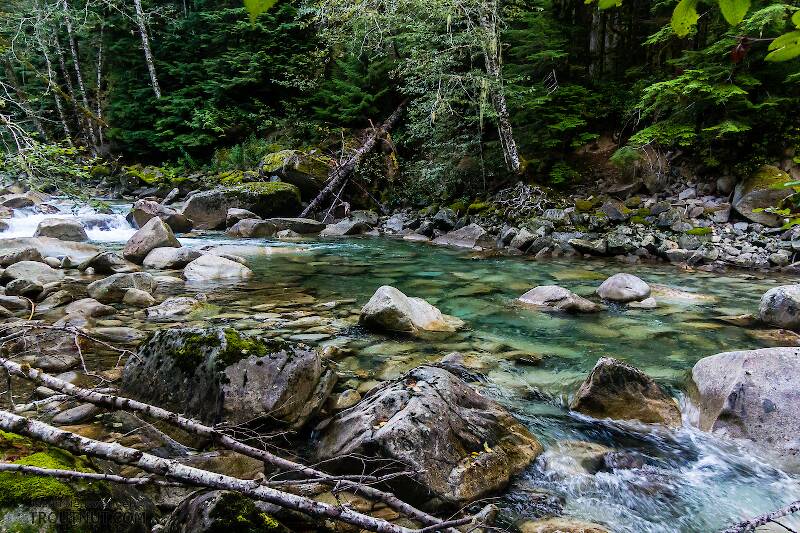
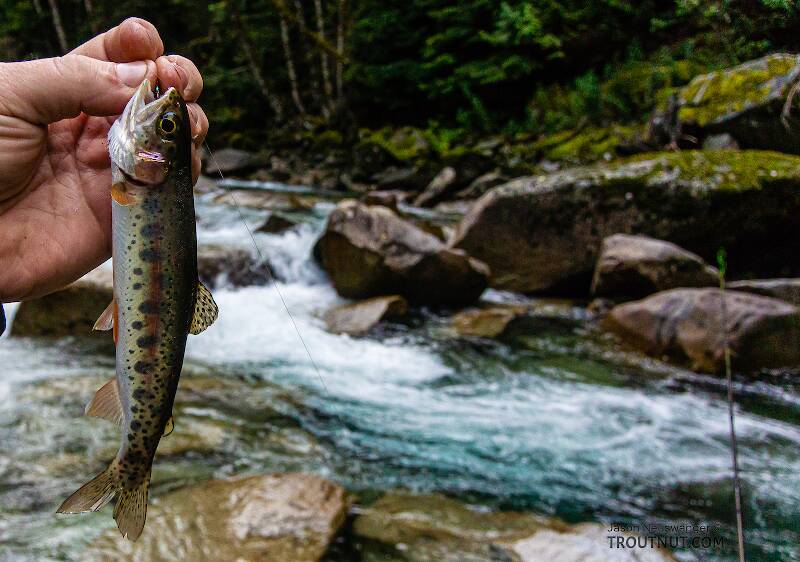

Comments / replies
Martinlf on Sep 24, 2020September 24th, 2020, 9:47 am EDT
Beautiful scenery, beautiful fish. Thanks so much for sharing.
"He spread them a yard and a half. 'And every one that got away is this big.'"
--Fred Chappell
--Fred Chappell
Wbranch on Sep 27, 2020September 27th, 2020, 10:20 am EDT
Why do the 5th and 8th trout have parr marks on them? Because they are still immature or is that a trait of those rainbows? Also what are the orange slivers on the tail of the 5th trout?
Catskill fly fisher for fifty-five years.
Troutnut on Sep 27, 2020September 27th, 2020, 1:16 pm EDT
The orange slivers on the tail are dead conifer needles that stuck to the tail when it touched the ground.
Lots of salmonids seem to at least partly retain their parr marks into maturity in streams where they don't have the potential to grow very big in the first place, including this one. These mountain rivers on the west slope of the Cascades are cold, with short growing seasons and not a ton of nutrients. You can see the same thing on my pictures of resident coastal rainbows from another drainage a couple weeks earlier.
Lots of salmonids seem to at least partly retain their parr marks into maturity in streams where they don't have the potential to grow very big in the first place, including this one. These mountain rivers on the west slope of the Cascades are cold, with short growing seasons and not a ton of nutrients. You can see the same thing on my pictures of resident coastal rainbows from another drainage a couple weeks earlier.
Jason Neuswanger, Ph.D.
Troutnut and salmonid ecologist
Troutnut and salmonid ecologist
Quick Reply
Related Discussions
Topic
Replies
Last Reply
8
Aug 23, 2016
by PaulRoberts
by PaulRoberts
22
Jun 14, 2012
by Shanti
by Shanti
6
May 20, 2013
by Flymonster
by Flymonster
15
Mar 30, 2017
by Crepuscular
by Crepuscular

